

The Unfixed Brain. What happens when you hold in a fart? Opinion Updated about 6 hours agoMon 10 Sep 2018, 7:11am Ever been in a situation where passing wind is going to be hugely embarrassing and you've had to hold in a fart?

Let's face it — we all have. Trying to hold it in leads to a build-up of pressure and major discomfort. A build-up of intestinal gas can trigger abdominal distension, with some gas reabsorbed into the circulation and exhaled in your breath. Holding on too long means the build-up of intestinal gas will eventually escape via an uncontrollable fart. The research is not clear on whether the rise in pressure in your rectum increases your chance of developing a condition called diverticulitis, where small pouches develop in the gut lining and become inflamed — or whether it doesn't matter at all.
What is flatus? Pigeonetics. Click and Clone. Viruses and infections. Why do our cell’s power plants have their own DNA? It’s one of the big mysteries of cell biology.
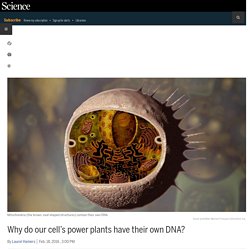
Why do mitochondria—the oval-shaped structures that power our cells—have their own DNA, and why have they kept it when the cell itself has plenty of its own genetic material? A new study may have found an answer. Scientists think that mitochondria were once independent single-celled organisms until, more than a billion years ago, they were swallowed by larger cells. Instead of being digested, they settled down and developed a mutually beneficial relationship developed with their hosts that eventually enabled the rise of more complex life, like today’s plants and animals. Mitosis and Meiosis. Animations. How cells divide. How do we smell? - Rose Eveleth.
All you ever wanted to know about Germs. What would happen to your body without water? Muscular System: Facts, Functions & Diseases. While most people associate muscles with strength, they do more than assist in lifting heavy objects.
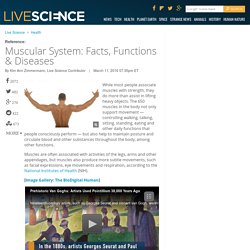
Nervous System: Facts, Function & Diseases. The nervous system is a complex collection of nerves and specialized cells known as neurons that transmit signals between different parts of the body.

It is essentially the body’s electrical wiring. The Human Body: Anatomy, Facts & Functions. The human body is everything that makes up, well, you.
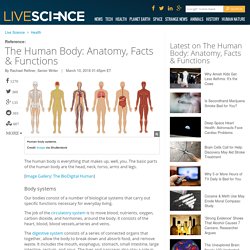
The basic parts of the human body are the head, neck, torso, arms and legs. [Image Gallery: The BioDigital Human] Our bodies consist of a number of biological systems that carry out specific functions necessary for everyday living. Skin: Facts, Diseases & Conditions. The human body's largest organ is the integumentary system, which includes the skin, hair, nails, glands and nerve receptors.

Skin weighs about 6 lbs. (2.7 kilograms) and sheds itself about once every 27 days, according to the Cleveland Clinic. In adults, skin covers a surface area of 18 square feet (1.7 square meters), according to the University of Pennsylvania Health System (Penn Medicine). Urinary System: Facts, Functions & Diseases. The urinary system, also known as the renal system, produces, stores and eliminates urine, the fluid waste excreted by the kidneys.

The kidneys make urine by filtering wastes and extra water from blood. Urine travels from the kidneys through two thin tubes called ureters and fills the bladder. When the bladder is full, a person urinates through the urethra to eliminate the waste. The urinary system is susceptible to a variety of infections and other problems, including blockages and injuries. These can be treated by a urologist or another health care professional who specializes in the renal system. Respiratory System: Facts, Function and Diseases. The human respiratory system is a series of organs responsible for taking in oxygen and expelling carbon dioxide.
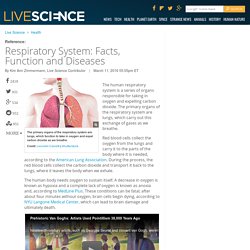
The primary organs of the respiratory system are lungs, which carry out this exchange of gases as we breathe. Red blood cells collect the oxygen from the lungs and carry it to the parts of the body where it is needed, according to the American Lung Association. During the process, the red blood cells collect the carbon dioxide and transport it back to the lungs, where it leaves the body when we exhale. The human body needs oxygen to sustain itself. A decrease in oxygen is known as hypoxia and a complete lack of oxygen is known as anoxia and, according to MedLine Plus. Prehistoric Van Goghs: Artists Used Pointillism 38,000 Years Ago Nineteenth-century artists, such as Georges Seurat and Vincent van Gogh, weren't the first to use pointillism, according to a discovery of 38,000-year-old decorated limestone tablets in France.
Skeletal System: Facts, Function & Diseases. The adult human skeletal system consists of 206 bones, as well as a network of tendons, ligaments and cartilage that connects them.

The skeletal system performs vital functions — support, movement, protection, blood cell production, calcium storage and endocrine regulation — that enable us to survive. Animals with internal skeletons made of bone, called vertebrates, are actually the minority, as 98 percent of all animals are invertebrates, meaning they do not have internal skeletons or backbones. Human infants are born with about 270 bones, some of which fuse together as the body develops. By the time we reach adulthood, we have 206 bones, according to Arizona State University’s School of Life Sciences. Reproductive System: Facts, Functions and Diseases.
Lymphatic System: Facts, Functions & Diseases. Immune System: Diseases, Disorders & Function. Endocrine System: Facts, Functions and Diseases. Digestive System: Facts, Function & Diseases. The human digestive system is a series of organs that converts food into essential nutrients that are absorbed into the body and eliminates unused waste material.
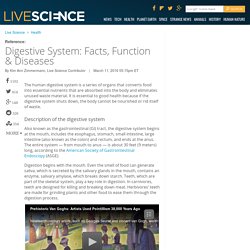
It is essential to good health because if the digestive system shuts down, the body cannot be nourished or rid itself of waste. Also known as the gastrointestinal (GI) tract, the digestive system begins at the mouth, includes the esophagus, stomach, small intestine, large intestine (also known as the colon) and rectum, and ends at the anus. The entire system — from mouth to anus — is about 30 feet (9 meters) long, according to the American Society of Gastrointestinal Endoscopy (ASGE). Digestion begins with the mouth. CellCraft. Six myths about vaccination – and why they’re wrong. A pear has 600 times more formaldehyde in it than a vaccine does, writes Rachael Dunlop. Image: Oksana Kuzmina/Shutterstock Recently released government figures show levels of childhood vaccination have fallen to dangerously low levels in some areas of Australia, resulting in some corners of the media claiming re-ignition of “the vaccine debate”. You can check how your postcode rates here.
Well, scientifically, there’s no debate. In combination with clean water and sanitation, vaccines are one of the most effective public health measures ever introduced, saving millions of lives every year. Those who claim there is a “debate” will cite a series of canards designed to scare people away from vaccinating, but, if you’re not familiar with their claims, you could easily be convinced by anti-vaccine rhetoric. So what is true and what is not? Let’s address just a few of the common vaccine myths and explain why they’re wrong. 1. Melting Glaciers Liberate Ancient Microbes. Editor's Note: This article is an extended version of "Bugs in the Ice Sheet" from the May 2012 Issue of Scientific American. GMO - What Is It? After Life: The Science Of Decay (BBC Documentary) Interactive Tutorials and Quizzes On Human Anatomy and Physiology.
Human Anatomy Model, Anatomy Chart, Anatomical Chart. Interactive 3D Human Anatomy. Home of CELLS alive!